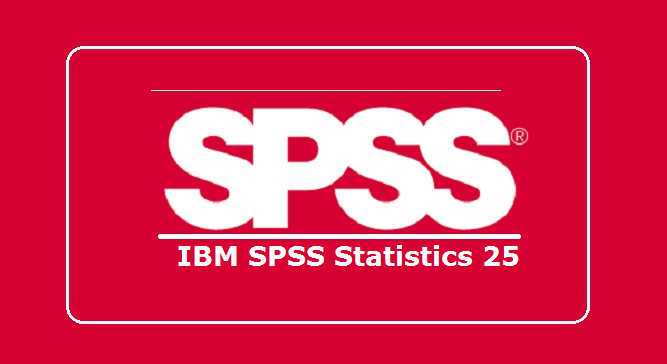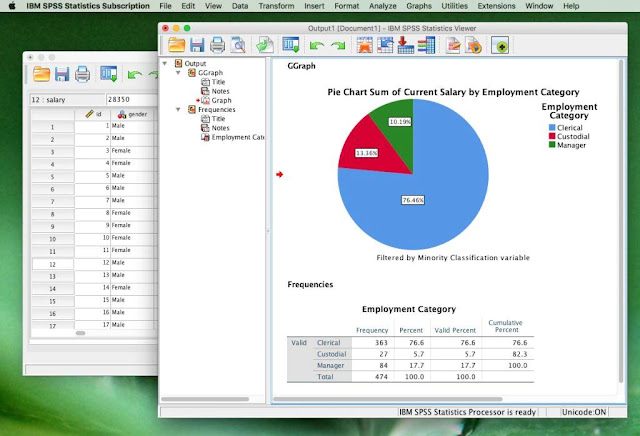


Armonk, NY: IBM Corpįor platforms other than Windows, substitute the name of the operating system. IBM SPSS Statistics for Windows, Version 27.0. IBM SPSS Statistics for Windows, Version 26.0. IBM SPSS Statistics for Windows, Version 25.0.

IBM SPSS Statistics for Windows, Version 24.0. IBM SPSS Statistics for Windows, Version 23.0. IBM SPSS Statistics for Windows, Version 22.0. IBM SPSS Statistics for Windows, Version 21.0. IBM SPSS Statistics for Windows, Version 20.0. IBM SPSS Statistics for Windows, Version 19.0. PASW Statistics for Windows, Version 18.0. SPSS Statistics for Windows, Version 17.0. Versions that were released after the acquisition would be given an origin or publisher of IBM Corp. before the IBM acquisition (Versions 18 and earlier) would be given an origin or publisher of SPSS Inc. If you need to include a citation, versions that were produced by SPSS Inc. You can see the precise release number by selecting Help->About in the menus.
#SPSS VERSION 25 SOFTWARE CITATION MAC OS#
For example, in popular APA style, SPSS is considered sufficiently known that only the version or release number is required. IBM SPSS Statistics Client 25.0 Mac OS Multilingual: CNLF9ML: Required: IBM SPSS Statistics Client 25.0 Mac OS Silent Multilingual: CNLG0ML: Required: IBM SPSS Statistics Client 25.0 Mac OS Multilingual (ISO Version) CNLG1ML: Optional: IBM SPSS Statistics Desktop 25. However, in many cases a formal reference or bibliographic citation is not necessary. A companion website includes downloadable versions of all the data sets used in the book.The format of a reference or bibliographic citation of IBM SPSS Statistics is specific to a particular style manual, and guidance on the structure of such references or citations needs to come from your chosen manual.
#SPSS VERSION 25 SOFTWARE CITATION HOW TO#
Appendices show how to estimate the models in SAS, SPSS, and R provide a review of regression assumptions using simulations and discuss missing data. Each chapter discusses how to utilize the models and test their assumptions with the statistical software Stata, and also includes exercise sets so readers can practice using these techniques. The chapters address logistic and probit models, including those designed for ordinal and nominal variables, regular and zero-inflated Poisson and negative binomial models, event history models, models for longitudinal data, multilevel models, and data reduction techniques such as principal components and factor analysis. Numerous examples from the social sciences demonstrate the practical applications of these models. This book provides an introduction and overview of several statistical models designed for these types of outcomes-all presented with the assumption that the reader has only a good working knowledge of elementary algebra and has taken introductory statistics and linear regression analysis. Instead, they must measure and analyze these events and phenomena in a discrete manner. Sociologists examining the likelihood of interracial marriage, political scientists studying voting behavior, criminologists counting the number of offenses people commit, health scientists studying the number of suicides across neighborhoods, and psychologists modeling mental health treatment success are all interested in outcomes that are not continuous. takes a straightforward, step-by-step approach that makes SPSS software. Social science and behavioral science students and researchers are often confronted with data that are categorical, count a phenomenon, or have been collected over time. IBM SPSS Statistics 25 Step by Step: A Simple Guide and ReferenceOctober 2018. Given the breadth of its coverage, the textbook is suitable for introductory statistics, survey research or quantitative methods classes in the social sciences. In addition, it provides clear instructions on how to conduct the tests in SPSS and Stata. The SPSS software is upgraded regularly, at the time of writing we were just starting to use. The book explains the theory, rationale and mathematical foundations of these tests. Lastly, they use said data to test their hypotheses in a bivariate and multivariate realm. Students are shown how to create their own questionnaire based on some theoretically derived hypotheses to achieve empirical findings for a solid dataset. In detail, the textbook introduces students to the four pillars of survey research and quantitative analysis: (1) the importance of survey research, (2) preparing a survey, (3) conducting a survey and (4) analyzing a survey. Building on the premise that statistical methods need to be learned in a practical fashion, the book guides students through the various steps of the survey research process and helps to apply those steps toward a real example. This textbook offers an essential introduction to survey research and quantitative methods.


 0 kommentar(er)
0 kommentar(er)
